We’ve all been there: the meeting’s wrapped up, you’ve delivered your pitch, and the conversation has gone well. But now comes the part that many overlook—the goodbye. Too often, we rush through this final moment, eager to move on to the next task. But here’s the thing: the way you say goodbye can be as impactful as your pitch itself. A thoughtful goodbye leaves a lasting impression, reinforces your professionalism, and sets the tone for your next interaction.
This small but crucial moment can be a powerful tool in building trust and solidifying your relationship with your prospect. Here’s how to turn your goodbye into a memorable, relationship-building close.
Why the Goodbye Matters More Than You Think
The goodbye is not just a polite ending—it’s the last thing your prospect will remember about you from that meeting. It’s an opportunity to reinforce the positive experience they just had and to leave them feeling respected, understood, and valued. When done right, a thoughtful goodbye can differentiate you from others, helping you stand out long after the call or meeting ends.
I learned the hard way that quickly wrapping up, even after a solid meeting, can create a sense of distance. I’d rush to say goodbye and head off, thinking the deal was sealed. But in those moments, I missed the chance to leave the prospect with a final, positive impression that could reinforce the work we’d just done together. After realizing this, I changed my approach—and the feedback I received from clients was clear: the thoughtful goodbye really resonated.
Reflect on Key Takeaways and Appreciation
One effective way to make a goodbye impactful is by reflecting on key takeaways from the conversation. This reinforces that you were fully present, attentive, and invested in their needs. Simply saying, “Thanks for a fantastic conversation today. I appreciate the insights you shared, especially about [specific challenge or goal],” is a small gesture that shows you value their input.
I often follow this by expressing genuine appreciation for their time and the effort they put into the discussion. A simple, “Thank you for your time today—I know you’re busy, and I truly appreciate the opportunity to explore how we might support your team’s goals,” goes a long way. People respond to genuine gratitude, and it reminds them that this interaction isn’t just another checkbox for you.
Reinforce the Value of the Next Step
If you have a clear next step (which ideally, you should!), your goodbye can reinforce the value of continuing the conversation. I’ve found that briefly mentioning the next step without making it sound overly formal helps set a positive tone. For example, “I’m really looking forward to our follow-up next week—I think we’re set to make some real progress on those ideas we discussed.”
This isn’t about being pushy; it’s about keeping momentum while ensuring they feel that each step has meaning. When you express genuine enthusiasm for moving forward, it’s contagious, and prospects are more likely to look forward to the next interaction.
Add a Personal Touch
Goodbyes are a natural moment to be a bit more personal. If your prospect shared something personal earlier—like a weekend plan or a favorite hobby—bring it up briefly before you part ways. For example, if they mentioned a big soccer game their kids are playing, I’ll often say, “Hope your kids have a great game this weekend!” or “Enjoy that family trip to the beach!”
These little touches show you’re genuinely interested in them as a person, not just as a prospect. It’s amazing how these small, genuine comments can help build rapport. I’ve had clients bring up those little details months later, saying, “I remember you asked about that trip.” That personal attention sticks with people and can set you apart in a world of generic, scripted interactions.
Leave Them with Confidence
If you’re truly confident in the value you bring, let it show in your goodbye. Leave them with a positive sentiment that reflects your enthusiasm and trust in your own solutions. This doesn’t mean boasting but rather saying something like, “I’m confident we can create something great together, and I’m excited to make it happen.”
Clients and prospects want to feel assured that they’re making a good choice, and when you close with confidence, they pick up on that energy. The goodbye becomes more than just polite; it’s a moment to reinforce that they’re in capable hands. This confidence in your close is one of the simplest, yet most powerful ways to stand out.
Keep It Warm and Authentic
In all the years I’ve been in sales, I’ve noticed that warmth and authenticity are what people remember most. A goodbye that’s rushed, overly formal, or perfunctory can come across as disinterest. But when I genuinely thank them, share a personal note, and say goodbye with enthusiasm, it’s a different story.
For example, I’ll often end with something like, “Really enjoyed our conversation today—thanks so much, and have a wonderful rest of your day.” It sounds basic, but it leaves the door open for a positive relationship. Whether or not they decide to move forward, you’ve left them with a lasting, positive impression that reflects your personal touch and professionalism.
Wrapping Up with Intention
So, the next time you wrap up a sales call or meeting, don’t rush to hang up or rush out the door. Give your goodbye the same thought and care you gave to the rest of the conversation. These final moments are an opportunity to stand out, build trust, and leave a positive, lasting impression.
A thoughtful goodbye shows them that you’re not just another salesperson—you’re someone who genuinely values their time and is invested in their success. So leave them with a clear message: you’re here, you’re present, and you’re looking forward to what’s next. That lasting impression is what turns a single conversation into a lasting, productive relationship.
